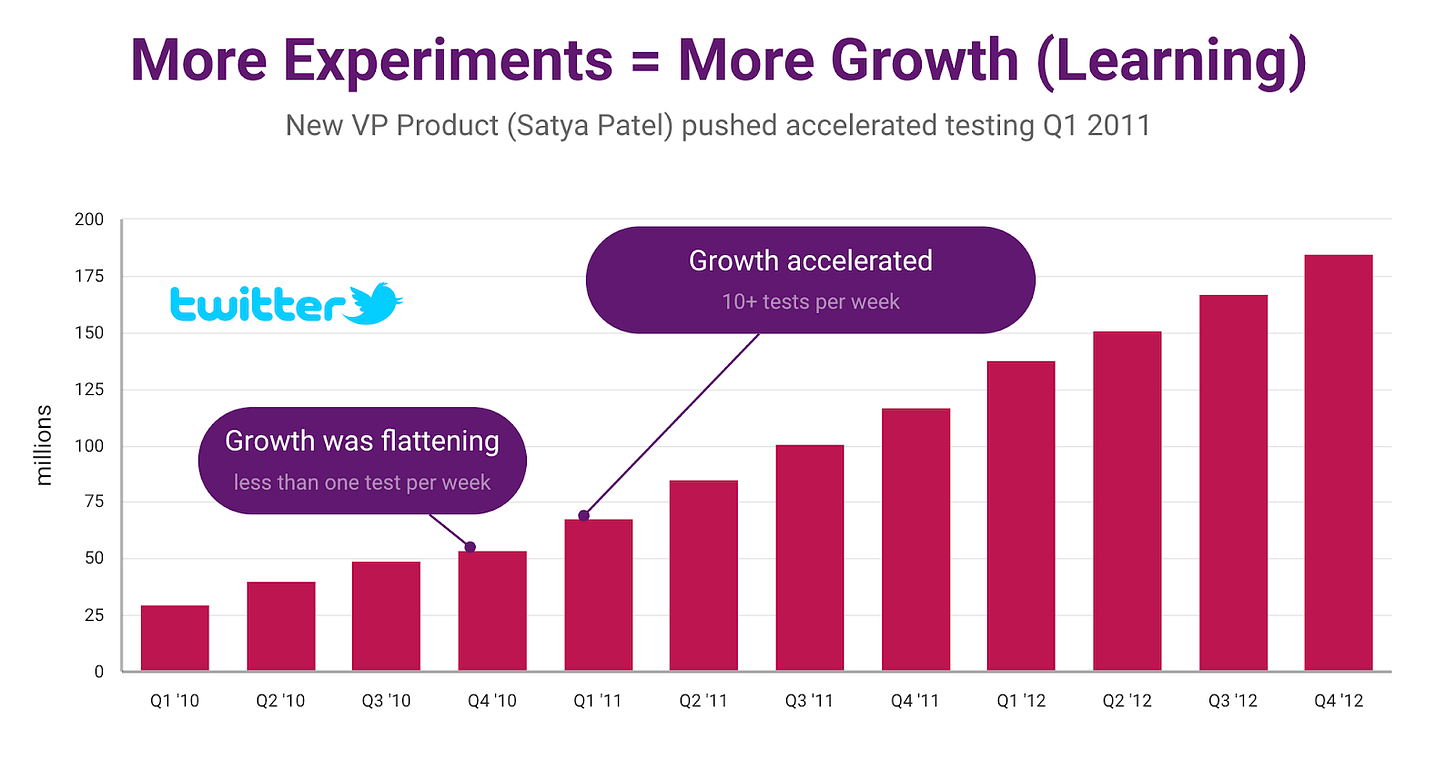Go-to-Market Milestones: A Roadmap for Scaling Your Startup
A guide to scaling your startup in 9 steps
This is an article that I wrote a couple of weeks ago with
. We posted it on her Substack and I just assumed it also posted on my as well (I’m still pretty new to the platform). Anyway, I’m posting again here so that it appears my feed. Enjoy if you haven’t read it yet!In this article, we’ll take you through the essential go-to-market milestones that unlock sustainable growth. Welcome to the journey from PMF to setting the right fundamentals for scaling.
Reaching your startup’s growth potential requires focusing on key milestones. These milestones aren’t based on a rigid methodology, but on universal truths we've observed through years of experience working with thousands of companies.
Go-To-Market Stage begins with capturing signals of product market fit and ends with finding a scalable and predictable way to find customers.
Once you achieve that, you are ready to find a new product market that fits the scaling stage by introducing new products, opening new markets, and validating new motions.
Success comes down to knowing what to focus on—and when.
This article builds on a previous one Sean wrote suggesting who you should hire to lead your go-to-market efforts (much recommended reading).
Here are the 9 Steps to help you navigate the Go-to-Market stage and take you closer to the Scaling.
The Go-to-Market Milestones for Startup Growth
1. Find Early Signals of Product-Market Fit
As soon as you release your MVP, start looking for signs of product-market fit. Who loves your product, and why? Pay attention to the early adopters who consider your product a must-have, and study their demographics, use cases, and pain points. These early users are your key to refining your product.
Tools like the product-market fit survey Sean created can help you gather insights into how well your product resonates with early users. The survey has helped many companies understand which users find their product essential. Keep in mind, product-market fit isn’t a static milestone—it requires continuous validation and iteration. Stay connected with your customers to ensure your product continues to meet their evolving needs.
2. Establish Metrics That Matter
Once you’ve found product-market fit, metrics become essential for growth. Focus on tracking metrics that show how effectively customers are moving through your funnel, from acquisition to conversion, and beyond. Additionally, engagement metrics and cohort-based retention tracking are crucial for understanding how well your product resonates with different segments of users over time.
Metrics provide actionable insights. Beyond basic conversions, dive deeper into customer behavior by tracking cohort retention and activation rates. These metrics will give you a clearer picture of whether your product is delivering lasting value. Tools like Mixpanel and Amplitude will help you focus on the metrics that drive faster iterations and optimize growth.
3. Uncover and Amplify Core User Value
Your next task is to remove complexity from the user experience and messaging to highlight the core value your product delivers. Simplify the onboarding experience and eliminate non-essential features that don’t contribute to a gratifying experience. This focus on core values will make it easier for users to understand and appreciate your product.
Effective activation is critical. Ensuring that users quickly experience your product’s core value will improve retention and engagement, making scalable customer acquisition easier and more profitable. A high-velocity experimentation culture will help refine activation flows, accelerate growth, and maximize customer value.
4. Implement a Business Model
Once you’ve validated product-market fit, it’s time to focus on growing revenue. Many startups delay monetization, thinking that user growth should come first. However, revenue is a critical driver of growth, and implementing a business model early can help you scale faster. Be clear on your pricing strategy, and don’t hesitate to experiment with different revenue models to find the most effective one.
Here is a blueprint for how you can test pricing and business model in go-to-market stages. Use research methods with higher confidence when you are testing this out. Yes, they can say they will love it, but will they pay for it?
5. Find Scalable Customer Acquisition Channels
With a business model in place, the next challenge is finding scalable customer acquisition channels. This requires a mix of experimentation and rigorous testing to uncover channels that bring in new customers cost-effectively and at scale.
Sean suggests to start with low-cost channels like SEO, referral programs, and partnerships. These can provide a foundation of organic growth without significant upfront investment. As you grow, experiment with paid channels such as social media ads, SEM (Search Engine Marketing), and influencer partnerships. The key is scalability. Not every channel will scale as your business grows, so prioritize those with potential for sustained growth. Test, optimize, and discard channels that show diminishing returns. The faster you identify scalable channels, the faster you can grow without unsustainable customer acquisition costss
6. Focus on Brand Experience Over Awareness
In today’s startup environment, it’s not about spending billions on brand awareness; it’s about delivering a seamless brand experience. Understand what your core users love about your product, then obsess over refining every element of that experience. A great brand experience leads to high retention, customer loyalty, and organic word-of-mouth marketing.
Brand experience drives long-term growth. Rather than simply increasing awareness, focus on delivering a memorable, emotionally resonant customer experience. Tap into psychological triggers such as social proof, trust, and FOMO (fear of missing out) to enhance your customer’s connection with your brand.
7. CEO-Led Growth
When it’s time to push for growth, the CEO must take an active role in driving go-to-market efforts. Customer acquisition and retention are critical for scaling, and while the CEO may not lead marketing, they should never fully delegate responsibility. The CEO must ensure that growth efforts align with product strategy and customer feedback.

Cross-functional collaboration is essential. The CEO should encourage alignment between marketing, product development, and customer success teams. Growth doesn’t happen in isolation; it’s driven by shared insights and coordinated efforts across the organization.
8. Adapt as Channels Saturate
Effective growth channels don’t last forever. As more marketers pile into a hot channel, its effectiveness decreases. Stay ahead by constantly testing new channels and tactics, and be ready to pivot when a channel’s performance starts to decline. This approach ensures you remain agile and can capitalize on emerging opportunities.
When I interviewed Sean Ellis for the GTM Strategist book, he offered a brilliant suggestion that we should keep 80% of our resources focused on GTM Motions that are already working (where the money is) and assign 10-20% of experimentation resources we have to testing out new channels, tactics and opportunities. By doing this and increasing the velocity of the tests, you will stay ahead of the competition and the laws of shitty clickthrough rates as channels get to the mainstream red ocean stage.
Stay curious and experiment continuously. As channels saturate, some of the best opportunities come from trying new approaches that others overlook. Build a culture where experimenting with new acquisition channels and creative marketing tactics is encouraged and rewarded.
9. Build for Scale
As your company grows, operational complexity increases. It’s essential to build a scalable infrastructure, both in terms of processes and people. Bringing in experienced operators to manage growth and ensure smooth execution is a smart investment as you approach the scaling phase.
Prepare for scale with the right mindset and infrastructure. Scaling isn’t just about growth; it’s about doing so sustainably. Build cross-functional, data-driven teams and implement systems to manage both complexity and the opportunity for growth.
Staying the Course
While these milestones provide a roadmap, the biggest risks come from losing patience and skipping steps. Many startups rush through critical phases, which can lead to unsustainable growth and eventual failure. A disciplined approach is key, ensuring you’ve achieved product-market fit, established a solid revenue model, and fixed operational bottlenecks before pushing for aggressive growth.
Mindset matters. Encourage your team to remain curious and resilient in the face of failure. Growth leaders must embrace the ups and downs of experimentation and learning. The goal isn’t just to grow—it’s to build a sustainable growth engine that can withstand challenges and adapt to new opportunities.
Remember, 🎯FOCUS remains your best friend. Your go-to-market strategy is your roadmap to sustainable growth.
Focus on solving real customer problems, validating your product, implementing a strong business model, and scaling thoughtfully. By hitting these milestones, you’ll position your startup for long-term success while minimizing the risk of burnout or premature failure. 💪
Build for future scaling, but stay focused on what is mission-critical to get there.
Good luck on your scaling journey!
Sean & Maja















This is so clear to read and understand, thanks for sharing
Love this framework for Startup GTM